Wellknown and well-respected worldwide
Dr. Emil Henningsen is wellknown and well-respected worldwide for his professional and effective acne scar treatments.
He offers skin treatments that combine high-end lasers and energy devices with manual procedures like subcision, chemical peels / CROSS, hyaluronic acid fillers, collagen-stimulating filler, lipoinjection, punch excision, skin surgery and more.
His long and broad experience with cosmetic and medical skin treatments, his caring nature and high ethics are some of the reasons that many international clients travel in to see him at Cutis Clinic.
About
Dr. Emil Henningsen
Dr. Emil Henningsen is a luminary in the field of laser and energy device treatments.
In 2014-15, he works under his British NHS registration with Prof. Chu at the West London Dermatology Centre. He is introduced to manual procedures in acne scar revision like subcision and TCA cross. Gradually, he developes his own treatment techniques and builds up an international network of reputable colleagues.
In 2017, he ends his hospital career at the Department of Dermatology at Odense University Hospital to focus on what he is passionate about: Highly specialized treatments of acne scars with a focus on laser treatments and manual procedures.
In 2019, he establishes Cutis Clinic in Odense, Denmark. The location is convenient as he lives close to the clinic in a friendly neighbourhood with his wife and three children. In the summer, he often rides his bicycle or motorcycle to Cutis Clinic, which is located only a mile from his home.
Cutis Clinic has clinics located in Kolding, Odense, Copenhagen and Køge.
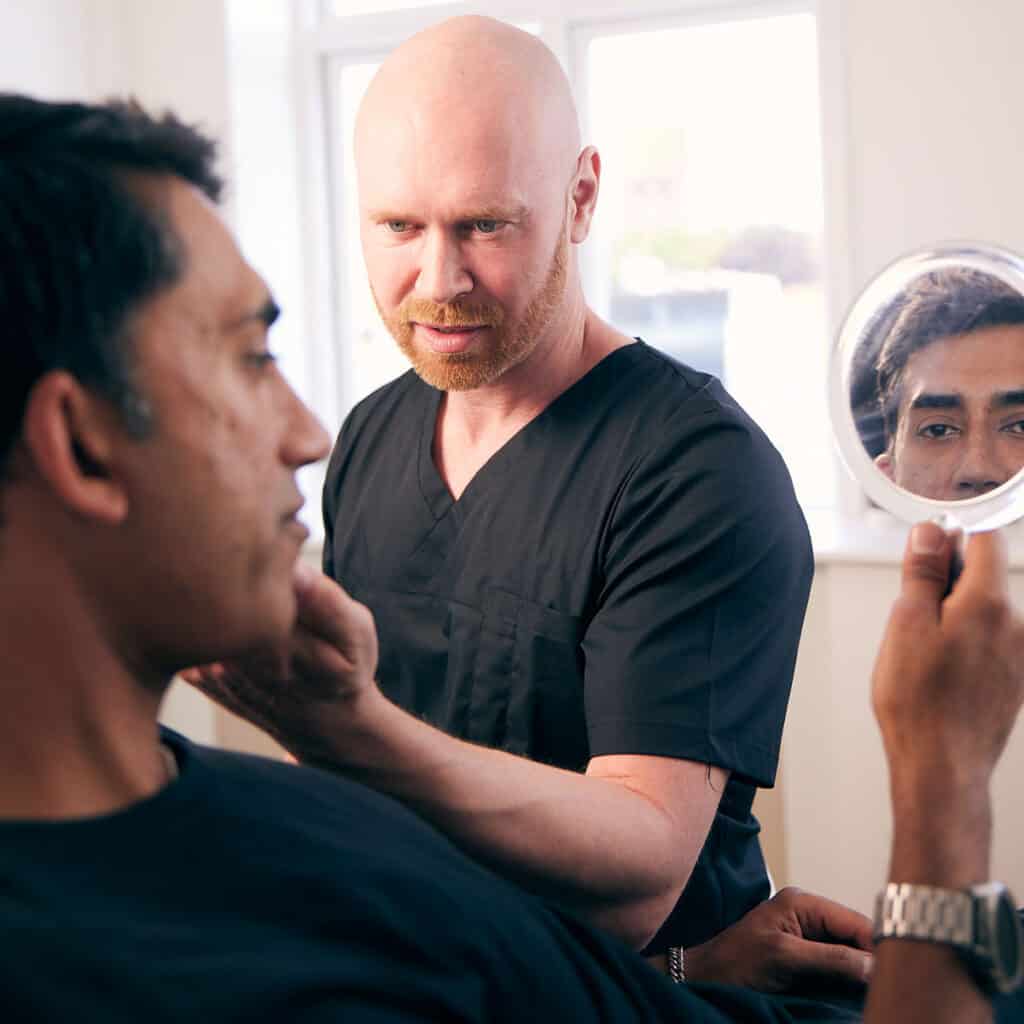

Consultation
Initial consultation with Dr. Emil Henningsen
We will reserve twenty minutes for your initial consultation with Dr. Emil Henningsen.
The initial consultation fee is DKK 500,- . We accept Visa/Mastercard, China UnionPay, Diners and JCB (OBS We don’t accept the currency EURO as payment).
At the consultation, Dr. Emil Henningsen will do a complete and thorough examination of your skin in different lighting.
You will have the opportunity to discuss treatment options, expected outcome, downtime, potential side-effects etc.
Treatments may be done on the same day as the initial consultation, or you may return for treatment at a later occasion.
Treatments
Acne scar treatments
Most patients require a series of treatments for better outcome.
In general, we recommend minimum three months intervals between treatments with energy devices (eg. Genius RF micro-needling, CO2 laser, Erbium laser, etc) as skin healing (neo-collagenisis and dermal remodelling) takes a long time.
Please be aware that Dr. Emil Henningsen is fully booked in certain periods and there may be some waiting time. It is wise to book a few months in advance.
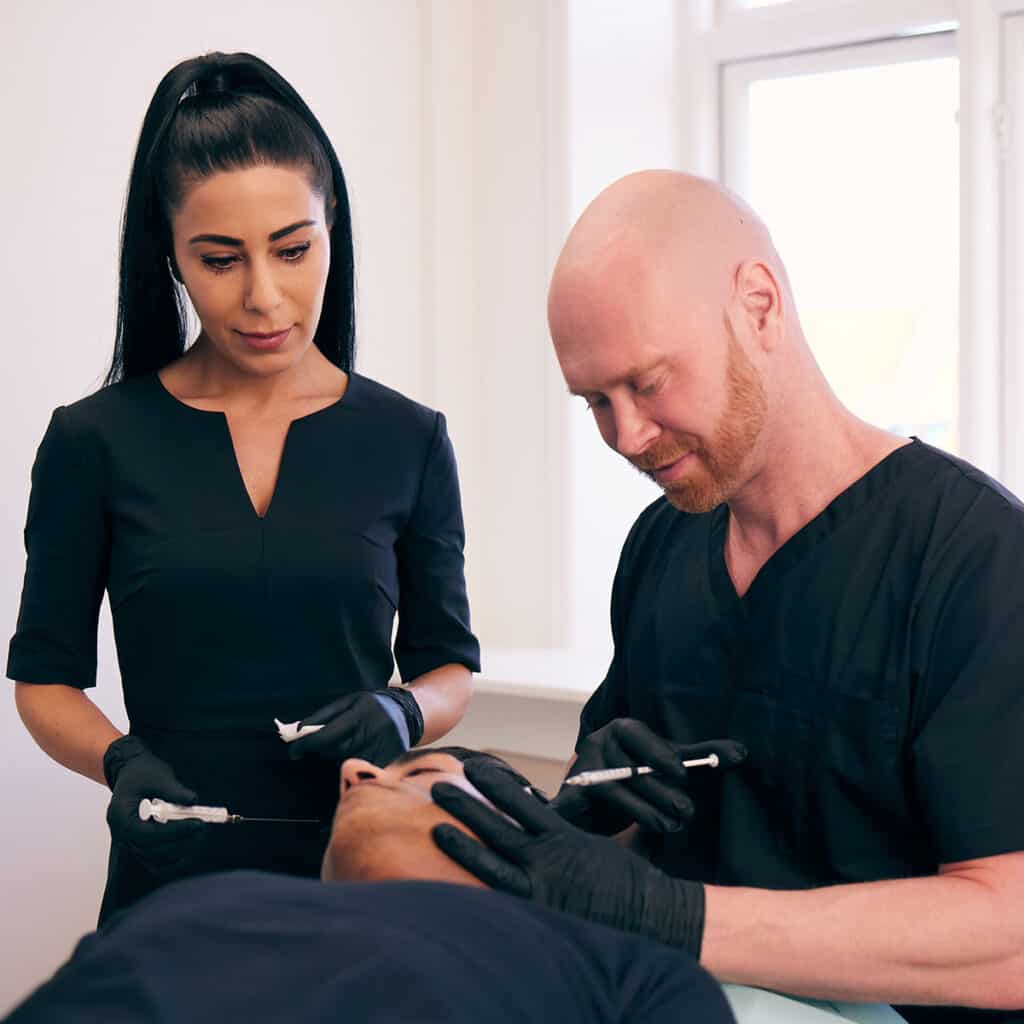
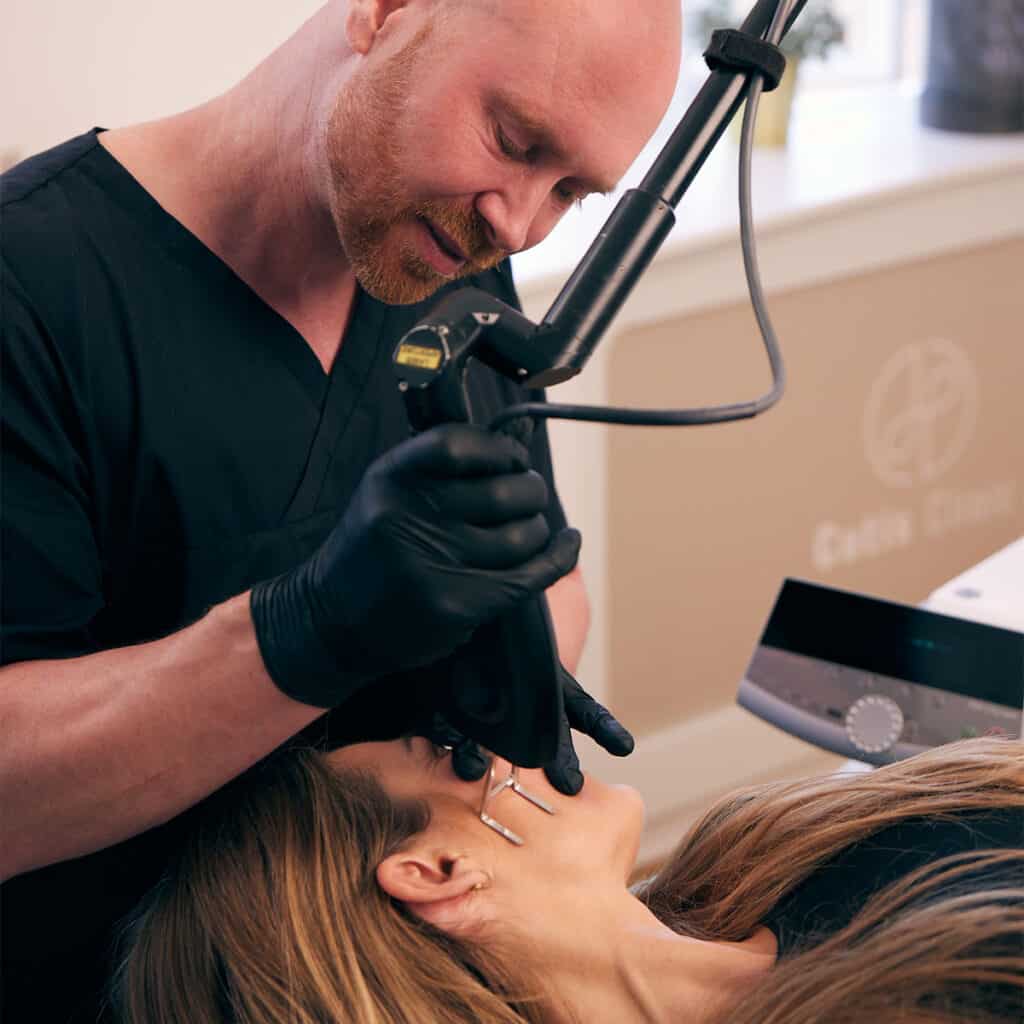
The key to success
The key to success lie in tailormade scar revision
Most patients look for lasers, because lasers are found everywhere online. However, lasers and energy devices may not be the best treatment option for everyone.
Most acne scar patients will have multiple scar types, and scar morphology will change over time with a treatment course.
Hence, the best treatment is a multi-method treatment suited to your type of scars. We will discuss treatment options based on your skin condition, skin type, time frame, downtime, budget, etc.
Common acne scar treatments that we recommend & our clients require
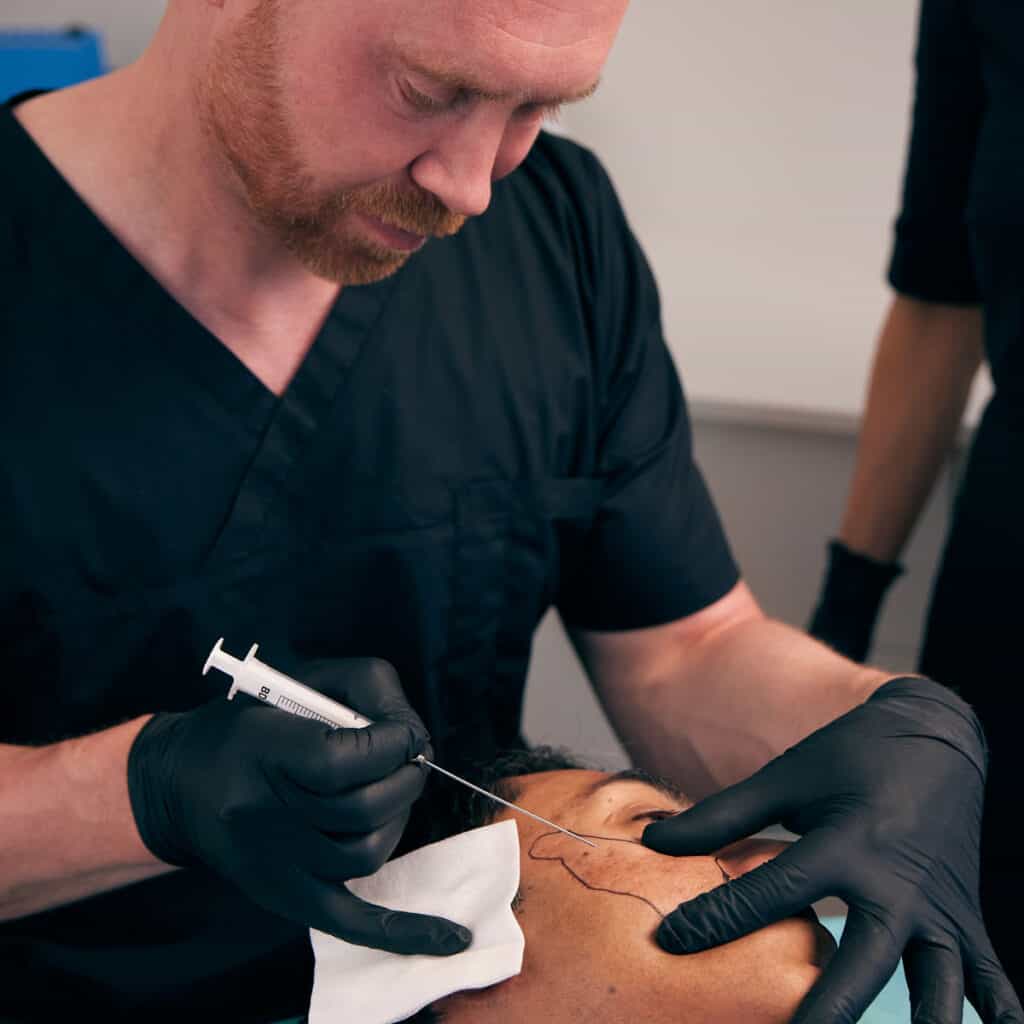
Subcision & Filling
Surgical procedure.
Local anesthesia (tumescent).
For tethered scars / rolling scars.
Downtime:
Swelling 2-4 days.
Travel home on the same day.
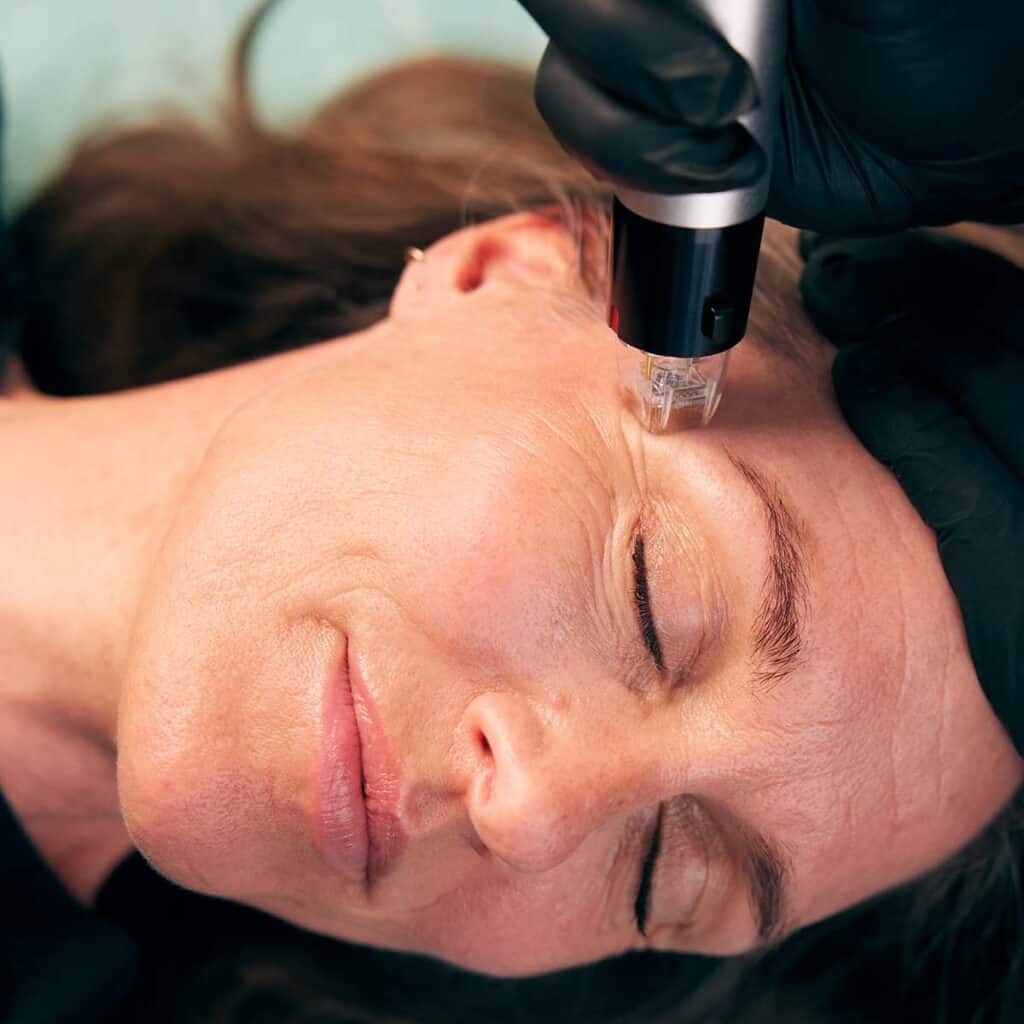
Lasers and Genius RF
Local anesthesia (topical and/or nerve block).
For textural scars.
Often combined with subcision.
Travel home on the same day (Genius and PicoPlus) or next day (fractional CO2 / Erbium).
Downtime:
Genius: Swelling 4 days, grid up to 8 weeks.
Fractional CO2 / Erbium: Swelling and oozing 5-6 days, redness up to 6 weeks.
PicoPlus: Swelling 1-2 days.
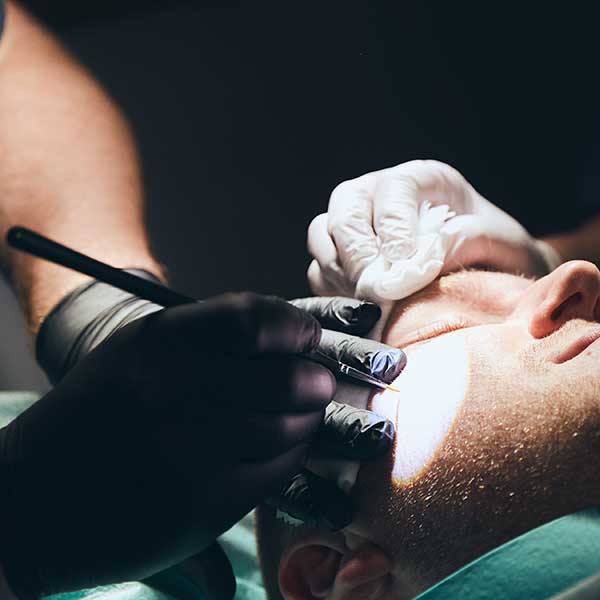
TCA Cross
No anesthesia.
For boxcars, linear scars, enlarged pores, icepeak scars.
Often combined with energy device or subcision.
Downtime:
Swelling 1 day, scab 1 week, redness 4-6 weeks.
Travel home on the same day.
Price list of acne scar treatments
We offer tailormade acne scar packages with discounts.
Where is Cutis Clinic Copenhagen located?
Our clinic in Copenhagen is located at Nordhavn in Copenhagen Ø.
Adress and contact
Cutis Clinic Copenhagen
Trelleborggade 15
2150 Nordhavn
Denmark
Tel: +45 7020 7066
Mail: info@cutisclinic.dk
Where is Cutis Clinic Odense located?
Our clinic is centrally located in Odense only a short walk from Odense Central Station.
Most facilities are close to our clinic. You will find the clinic at the corner of a block of old buildings right between the two old main churches in the town centre.
Adress and contact
Cutis Clinic Odense
Albani Torv 5
5000 Odense C
Denmark
Tel: +45 7020 7066
Mail: info@cutisclinic.dk
FAQ - Acne scar treatment in Denmark
After the treatment, most patients decide to stay a night or two before travelling back home – though it is possible to travel on the same day, if you can tolerate some redness and swelling.
If you stay a night or two, you are welcome for a check with our nurses before leaving town.
We accept Visa/Mastercard, China UnionPay, Diners and JCB. Unfortunately we do not accept cash.
You can book online here>
Dr. Henningsen is available for appointments in Cutis Clinic Odense (close to Odense Central Station) and in Copenhagen.
If in doubt, please call the clinic at +45 7020 7066 on weekdays between 8:30-12:00 am or 01:00 – 4:00 pm.
or send us an e-mail at: info@cutisclinic.dk
Dr. Emil Henningsen will guide you through the treatment process to decide which treatment to choose at any particular point in your treatment course.
Most of the times we combine multiple lasers and non-laser treatments in the same treatment to provide the best outcome.
The use of multiple treatment methods form the basis of your individual acne scar revision program.
Scar revision is a highly complex and variable procedure that requires patience from both patient and specialist to get the best possible results.
Many patients return 4-8 times for treatment with 3-6 month or longer intervals. Most patients treat over 2-3 years.
Key Differences Between Taylor Subcision and Other Types of Subcision:
Taylor Subcision:
- Target Area: Taylor subcision is typically used for larger areas with widespread, severely tethered scarring. It’s particularly effective for treating diffuse, rolling scars where multiple fibrous bands are causing the depressions.
Since Taylor subcision is performed using a sharp instrument that dissects the scar tissue from the subcutaneous tissue, this procedure is generally more effective than blunt subcision.
- Trauma and Downtime: Taylor subcision may cause more swelling and bleeding, potentially resulting in bruising and longer recovery times compared to blunt cannula subcision.
- Filler: Following Taylor subcision there will be some drainage of the tumescent anesthesia and fillers are, therefore, not suitable to be used with Taylor subcision.
Other Types of Subcision:
- Intradermal Subcision (micro sucbision): Targets the most superficial layer of the scars. This is a gentle version of subcision, where subcision is performed using a fine needle – usually a 25 G needle – to target specific areas with precision. Needle-based subcision is more precise for targeting specific scars, but it may not be as effective for larger, diffuse areas of scarring.
- Intradermal subcision may be combined with injecting a hyaluronic filler or biostimulator like Radiesse in the dermis.
- Cannula Subcision: Targets the subcutaneous layer of the scars. This method uses a blunt cannula used to manipulate under the skin. This method is less aggressive than Taylor subcision and often covers smaller areas. It may require more treatments to get the same result as Taylor subcision. The blunt nature of the cannula reduces the risk of accidental damage to blood vessels or nerves, making the procedure safer in certain areas of the face.
- Filler: Cannula subcision may be combined with injecting a hyaluronic filler or biostimulator like Radiesse under the skin – in the sub-dermis.
- Trauma and Downtime: Cannula subcision generally causes less tissue trauma due to the blunt needle, leading to less bruising and swelling. The recovery time can be shorter compared to Taylor subcision.
To ensure we provide the most effective plan moving forward, it’s best to evaluate your skin’s current condition during an in-person appointment. This allows us to assess the progress accurately and adjust the treatment if needed.
If an in-person visit is not possible at this time, you are welcome to send us updated photos of your skin via email. This will help us evaluate the results remotely and provide you with recommendations.
To ensure the best possible experience and treatment outcome, we recommend scheduling an online consultation prior to the treatment day. This allows us to thoroughly plan your treatment, assess your individual needs, and allocate the appropriate amount of time and resources to ensure everything runs smoothly.
The online consultation will also provide an opportunity to answer any questions you may have and help you feel more confident and prepared for the treatment.
Most acne treatments can be safely performed while you are continuing your isotretinoin treatment. However, we do not offer full ablative laser resurfacing during this period, as there is not sufficient evidence to consider this treatment option same on skin undergoing isotretinoin therapy.
It is possible to treat acne scars even if there is still mild activity in the acne. However, in cases where the acne is moderate to severe, it is important to first bring the active acne under control before starting any treatments for the scars. This approach helps to ensure the best possible results from the scar treatment and prevents further scarring from new acne lesions.
When performed correctly and without complications such as infection, subcision and energy-based treatments do not result in volume loss in the face. These treatments are designed to target specific areas without affecting the overall facial volume.
However, in the case of radiofrequency microneedling, if the procedure is carried out at too great a depth, it is possible for the treatment to affect the fat in the face, which could lead to unwanted volume reduction. This is why the precision and settings of the equipment are crucial to ensure optimal and safe results. When performed with proper technique, these treatments are highly effective without any risk of volume loss.
We can treat acne scars in the vast majority of individuals who have a history of hypertrophic scars.
Additionally, many patients with keloid scars may also be suitable candidates for treatment, though this can depend on individual circumstances.
We would recommend a consultation to assess your specific case and discuss the best approach tailored to your needs.
Acne scar treatment typically results in gradual improvements, and in most cases, you can anticipate a relative improvement of 20-30% after each treatment session. It’s important to note that these improvements are permanent. However, as we age, the face naturally loses volume, which can cause scars to appear differently over time as the skin changes.
Overall, we offer all types of treatments on patients with darker skin types. When undergoing treatment for acne scars, there is a minor risk of developing temporary pigmentation changes, especially in individuals with darker skin tones. These changes, such as darkening (hyperpigmentation) or lightening (hypopigmentation) of the skin, are usually temporary and tend to fade over time as the skin heals and regenerates.
To minimize the risk of these pigmentation changes, it is important to follow post-treatment care recommendations closely. This typically includes avoiding direct sun exposure and using high SPF sunscreen, as sun exposure can exacerbate pigmentation issues. In most cases, the skin will gradually return to its natural tone within a few weeks or months.
The best approach for assessing your progress and planning any potential next treatment is through an in-person evaluation. During this visit, we can assess the current status of your skin, and if appropriate, proceed with the next treatment on the same day.
If you are unable to attend a follow-up appointment in person, an alternative option would be to send us recent photos of the treated areas along with a brief description of how your skin has responded to the treatment. You can email this information to our customer service team, and based on your update, the dermatologist can provide guidance on the next steps.
Book a consultation
Dr. Henningsen is available for appointments in Cutis Clinic Odense and Copenhagen.
If in doubt, please call the clinic at +45 7020 7066 Monday – Thursday between 8:30 am -15.30 pm, Fridays 8.30 am – 14.30 pm
Do you have questions?
Contact us by mail or call the clinic at +45 7020 7066 on weekdays between 08:30 – 12:00 am or 12:30 – 04:00 pm.
